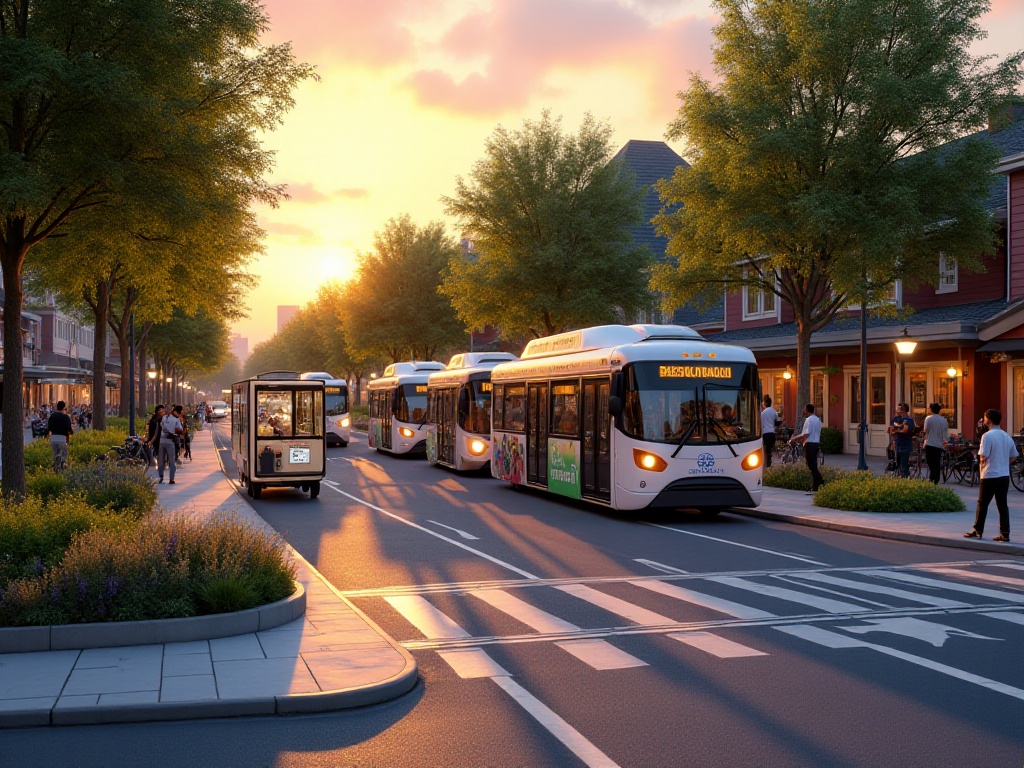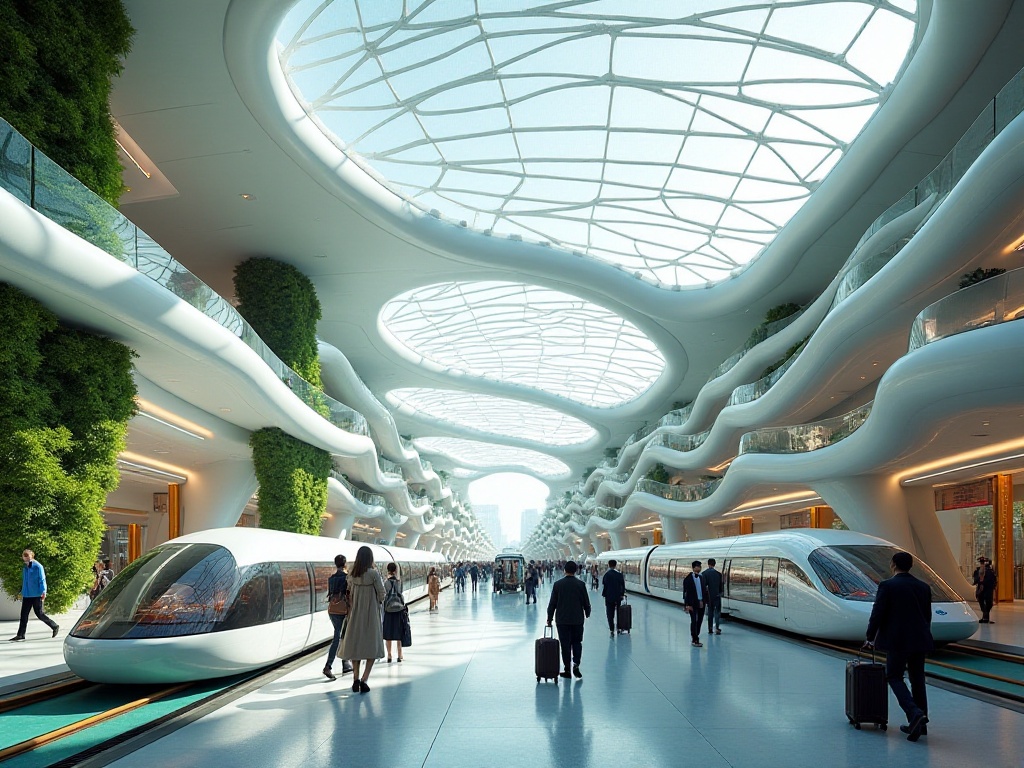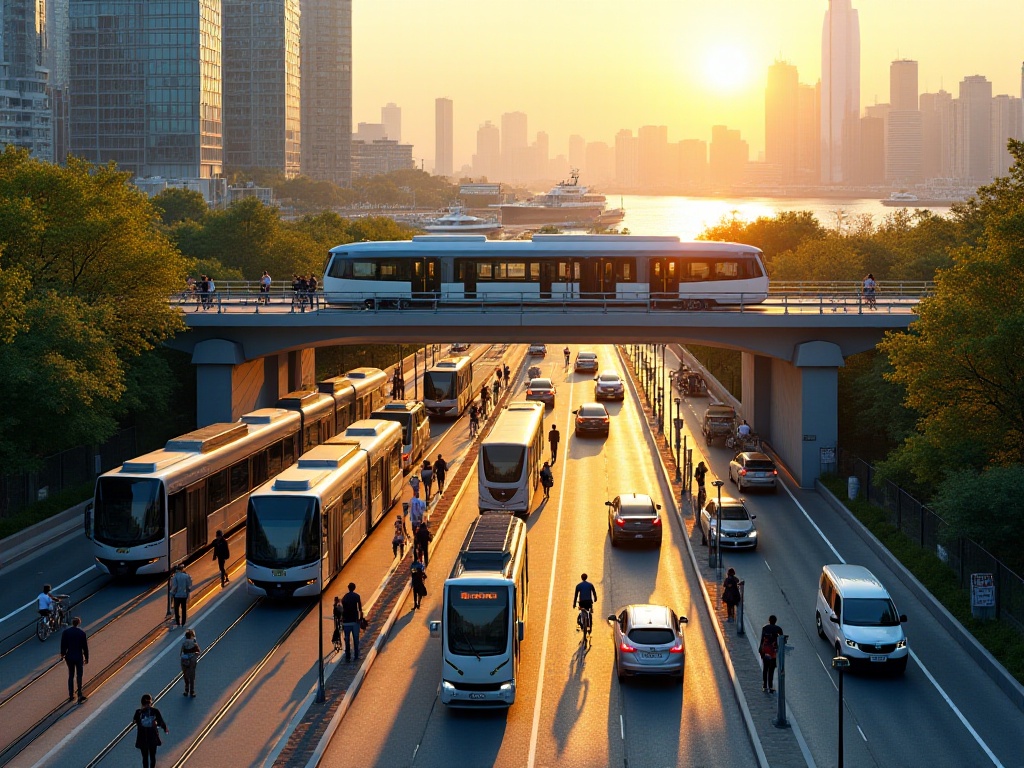The other day, I was having coffee at Starbucks with a friend from New York. While eating his matcha cake, he remarked, "Chinese urban transportation is simply amazing! Especially the subway system - it's worlds apart from New York's." When I asked him why, he immediately launched into his experiences.
This reminded me of my own travels around the world over the years. As a travel blogger who has visited over thirty countries, I've deeply experienced the varying impacts of different cities' transportation systems. Being crushed in London's subway, anxiously waiting for delayed trains on Paris platforms, getting dizzy from complex route maps in Tokyo subway stations... In comparison, China's public transportation system truly provides an incredibly comfortable experience.
Speaking of subways, Shanghai's "subway kingdom" deserves special mention. Shanghai's subway network has exceeded 800 kilometers in total length, becoming the world's longest subway system. This isn't just a simple number. From People's Square in the city center to Songjiang New City in the suburbs, from Pudong International Airport to Hongqiao Hub, the dense subway lines connect every corner of this mega-city like blood vessels.
Beijing's subway system is equally impressive, with a massive network spanning 783 kilometers that covers almost every popular attraction and commercial district. I remember taking foreign friends to the Great Wall - they were amazed that we could take the subway directly from the city center to Badaling. Abroad, such scenic spots usually require private cars or tour groups to reach.
New York's subway, while boasting 472 stations, only has 394 kilometers of operating lines. More crucially, most of these lines were built in the early 1900s, with aging facilities that frequently experience breakdowns and delays. My New York friend complained that he leaves for work 30 minutes early every day, worried about sudden service suspensions or route changes.
Shenzhen's subway left the deepest impression on me. During my first business trip to Shenzhen, I was amazed just by the level of intelligence in the subway stations. No need to queue for tickets - just a quick scan with your phone and you're done. The smart customer service robots speak not only Mandarin but also Cantonese and English, instantly planning optimal routes for lost passengers and even recommending nearby food and attractions.
LED displays in the carriages constantly update real-time arrival information and even show crowding levels at transfer stations. This is rare abroad. During my time living in London, I often saw tourists confused by automatic ticket machines that only accepted credit cards and frequently malfunctioned.
What impressed me most was Shenzhen's security check system. Through smart AI recognition, passengers can walk through security gates without stopping, ensuring safety without affecting efficiency. In contrast, New York subway security seems primitive, with security staff manually checking each person with detectors, causing queues that extend outside stations during peak hours.

Speaking of unique transportation, Shanghai's water-land integration system is definitely worth mentioning. The Huangpu River ferry has become a city icon. Every morning, you can see many white-collar workers holding coffee, leisurely sitting on ferries enjoying the sunrise views of both banks. The ferry ticket costs only 2 yuan, unbelievably cheap.
I remember once rushing to an early meeting, catching the ferry from Pudong to Puxi, not only avoiding tunnel traffic but also enjoying river views along the way. It felt much better than anxiously sitting in a taxi. More importantly, this 2-yuan ticket lets you enjoy priceless urban scenery.
In comparison, while Venice's water buses offer beautiful surroundings, their 20-euro tickets make many hesitate. Most tourists try it once for the experience and never ride again. Shanghai's ferry, however, has become the preferred commuting choice for many citizens.
China's bus system has undergone tremendous changes in recent years. In 2017, Shenzhen became the first major city globally to achieve full bus electrification. Now walking on Shenzhen's streets, you no longer hear traditional diesel bus roars, replaced by the slight hum of electric buses.
As of 2023, China has over 700,000 new energy buses, accounting for over 71% of the total. This number reflects China's massive investment in green transportation. Each electric bus reduces carbon emissions by about 30 tons annually.
Beyond power system innovation, buses' intelligence levels keep improving. Modern buses are equipped with smart dispatching systems that adjust routes and frequencies based on road conditions in real-time. In-vehicle displays show next stop information, transfer information, and major attraction introductions.
Shared bikes and ride-hailing services have completely changed how urban residents travel. During a business trip to Guangzhou, I needed to walk some distance after getting off the subway. I could easily find a shared bike through my phone, scan to unlock, and arrive within minutes. This kind of "last mile" seamless connection is hard to experience abroad.
Ride-hailing services are equally impressive. In Guangzhou, I called a ride through my phone, the driver arrived in 5 minutes, I could track the car's real-time location through the app, and know the fare in advance. In Paris, I once waited nearly 30 minutes for a taxi in the rain, the driver was unfriendly, and paying cash became an issue with change.
Many cities now offer customized bus services, analyzing passenger travel needs through big data to operate customized commuter routes. This service ensures passenger comfort while improving transit system operational efficiency. In Beijing, some technology parks have launched such customized bus routes, popular among white-collar workers.

In recent years, major cities have been continuously improving travel services for special groups. Beijing subway's accessibility facilities coverage exceeds 95%, with almost every station equipped with wheelchair lifts. Additionally, stations have guide paths for visually impaired travelers. Staff receive special training to provide timely assistance to passengers with mobility difficulties.
Shanghai's "Care Special Vehicle" service leads the way. This service specifically serves elderly and disabled passengers, providing customized travel solutions. Passengers can book in advance, and special vehicles arrive on time at designated locations, equipped with professional care staff providing attentive service throughout the journey. It serves over 500,000 passengers annually, receiving widespread social acclaim.
Many cities' buses feature low-floor designs for easy wheelchair and stroller access. Carriages have dedicated wheelchair securing devices and priority seats. These detailed designs reflect urban public transport's care for special groups.

Looking ahead, Chinese urban transportation has even broader development potential. In Shenzhen, self-driving buses have begun trial operations. These driverless buses equipped with advanced sensors and AI systems can accurately identify road conditions ensuring safe operation. Though still in testing, they show promising application prospects.
Chongqing's "aerial rail transit" is another exciting innovative project. These suspended monorail trains can travel between high-rise buildings, not only relieving ground traffic pressure but also providing unique sightseeing experiences. Once completed, it will be the world's longest aerial rail transit system.
Some cities are experimenting with smart bus stops. These new stations feature smart air conditioning systems that automatically adjust temperature based on waiting passenger numbers. Displays show not only bus arrival information but also weather forecasts and air quality data, helping passengers stay informed about travel conditions.
Looking back at Chinese urban public transportation's development over the years makes one incredibly proud. From initial "hard-to-get tickets" to today's smart travel, from traditional diesel buses to clean energy vehicles, from simple bus routes to comprehensive multimodal transport systems, each step forward embodies countless people's wisdom and effort.
While some details still need improvement, like peak hour congestion and transfer distance optimization, overall, Chinese urban public transportation leads the world. Whenever foreign friends praise our transport system, pride naturally wells up.
Actually, a city's public transportation system somewhat reflects its development level and humanitarian care. Hopefully, our future urban transportation will become more intelligent, environmentally friendly, and human-oriented, providing better travel experiences for citizens. Which public transportation mode in your city do you like best? Feel free to share your thoughts and experiences in the comments.
 Previous
Previous
